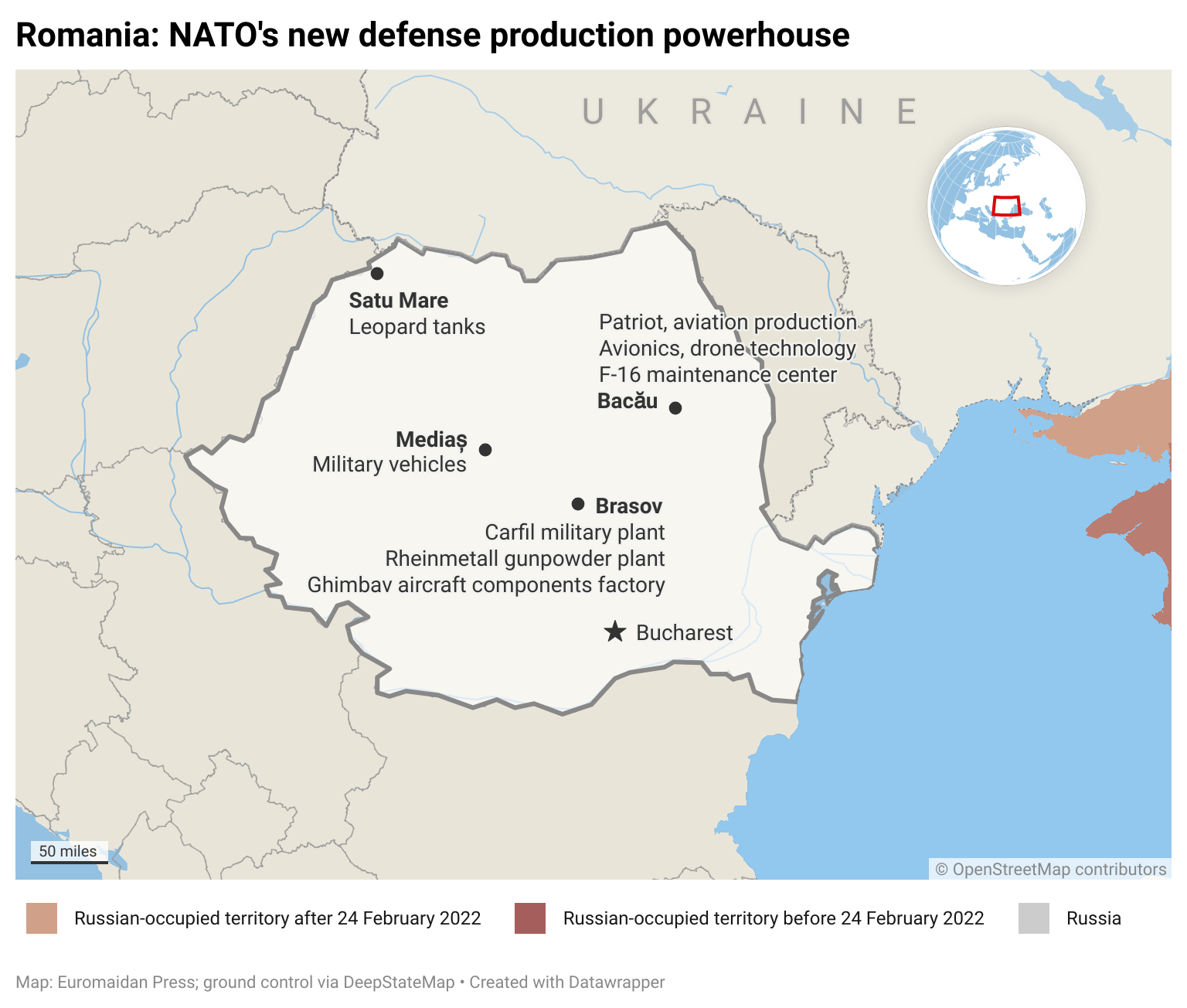Romania is quietly becoming Europe’s defense powerhouse

Romania is accelerating the revival of its defense industry with American and German support, prioritizing the domestic production of drones, explosives, and gunpowder, Radio Free Europe Romania reports.
The move comes as the country consolidates its role as a key NATO hub on the Alliance’s eastern flank and a critical logistics lifeline for Ukraine amid the ongoing Russo-Ukrainian war.

Brașov to become drone and explosives hub
In spring, Romania’s Ministry of Economy announced that the Transylvanian city of Brașov would host new facilities for the production of drones, explosives, and ammunition.
The local Carfil military plant is expected to produce drones using components supplied by American defense company Periscope Aviation.
“This is not a simple acquisition; it is a complete technology transfer, meant to build an indigenous industrial capacity in Romania — a long-term strategic objective for many NATO member states that want to reduce their dependence on imports and strengthen their defense industrial base,” stressed Economy Minister Bogdan Ivan.
Mr. Ivan also confirmed that drone production is scheduled to begin this summer, with an annual target of approximately 3,500 units.
“We are beneficiaries of the European SAFE Mechanism, financed by the European Commission with up to €150 billion. We have submitted Romania’s production capacities for the next ten years, along with proposals on how we can evolve, what we can build, and where we can be competitive,” Ivan said in an interview with Digi24.
Rheinmetall invests €400 million in gunpowder
At the same time, Germany’s Rheinmetall defense conglomerate is building in Brașov what will be the largest military gunpowder factory in Europe, with an investment of €400 million.
Romania’s leadership has emphasized that domestic production of gunpowder is a top priority, as the country currently imports it from Serbia, where much of the supply originates in Russia.
“This is essential for Romania’s security and independence,” said former Economy Minister Radu Oprea, underlining the need to reduce reliance on foreign sources.
Last year, Prime Minister Marcel Ciolacu also declared that Romania would soon host the “most modern gunpowder plant in Europe.”
Broader industrial revival
The new projects in Brașov are part of a broader national strategy to revitalize Romania’s defense industry. German investments are also reinforcing the Mediaș plant, which is set to expand production of military vehicles.
In Satu Mare, plans are underway to launch production of Leopard tanks, further strengthening Romania’s heavy weapons capabilities.
These initiatives align with NATO’s push to ramp up production capacities across Europe in response to Russia’s ongoing war against Ukraine. Romania’s geographical position and existing infrastructure make it a frontline state in both logistics and industrial support for Kyiv.

Photo: Rheinmetall Automecanica SRL plant in Mediaș, Romania. May, 2024. Romania. Frame from the Nova Tv Medias video channel
Continuing tradition
Since the 1990s, Romania has cultivated increasingly close ties with major foreign defense companies.
Israel’s Elbit Systems was the first, establishing a joint venture with Aerostar Bacău in 1997 to modernize the Romanian MiG-21 fleet to the LanceR standard. The company also operates a local branch, Elmet International SRL, which produces avionics and drone technology.
Partnerships with US companies such as General Dynamics, Lockheed Martin, and Raytheon Technologies have resulted in:
- creating an F-16 maintenance center
- the production of Patriot system components
- an assembly and production line for Piranha V armored personnel carriers in Romania.
Meanwhile, France’s Airbus, Naval Group, and Thales have supplied military communication systems, taken over and modernized the Ghimbav aircraft components factory, and entered into partnerships with the Constanța Naval Shipyard.
In addition, Poland’s PGZ has signalled interest in competing with its Borsuk model in the upcoming tender for Romania’s new infantry fighting vehicles.

Bayraktar drones stand lined up at a production facility in Brasov, which received massive investments from Airbus in 2024. Photo: Profimedia Images, Hotnews
Strategic significance for NATO and Ukraine
Romania is boosting its defense sector under the new 2024–2030 National Defense Industry Strategy, raising military spending above 2% of GDP and prioritizing advanced technologies such as AI, cybersecurity, and drones.
The plan focuses on:
- joint UAV production with Ukraine
- potential submarine manufacturing
- modernization of naval forces,
- fostering research and development, NATO–EU cooperation, and public–private partnerships to strengthen national security and position Romania as a competitive global defense producer.
Since Russia’s full-scale invasion of Ukraine in 2022, Romania has re-examined its security posture as a direct neighbor of the war zone. Hosting vital NATO facilities and serving as a transit hub for military aid, Romania has become indispensable to both Ukraine’s defense and NATO’s deterrence strategy.